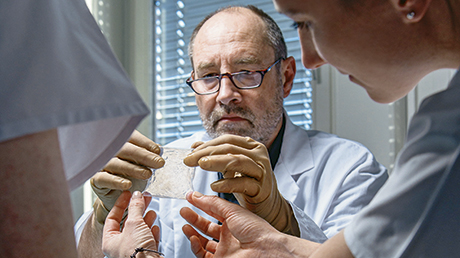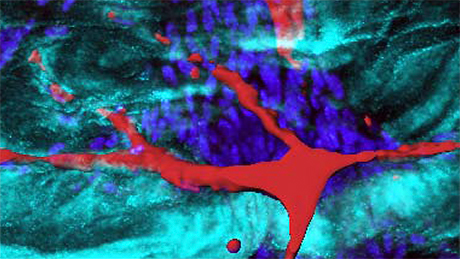Navigation auf uzh.ch
Navigation auf uzh.ch

The research has been a long time in the making. Ernst Reichmann, scientific director of the Novel Tissue Engineered Skin Grafts for Zurich CRPP, has spent 14 years working on artificial skin substitutes for children. Now he’s about to reap the fruits of these countless hours of work: In clinical phase I trials at the University Children’s Hospital, the teams headed by Martin Meuli, Director of the Department of Pediatric Surgery, and Clemens Schiestl, Director of the Pediatric Burn Center and Plastic and Reconstructive Surgery, were recently able to use the artificial skin for children with burns. The studies of the children are still under way, but in light of the first interim results, cellular biologist Ernst Reichmann is confident: “It looks pretty good.”
As head of the Tissue Biology Research Unit, he and his team are working on the challenge of imitating a complex organ, skin. “We use a collagen matrix and combine it with different skin cells, including adult stem cells,” explains Reichmann.
But the structure of the skin grafts is still relatively simple by comparison with natural skin. It doesn’t have vascular, pigment or nerve cells. The researchers are currently working on engrafting these types of cells as well to mimic natural skin as closely as possible. Last year they notched up spectacular successes when they managed to generate blood and lymph capillaries in engineered skin substitutes.

The cellular biologists are currently working all-out to enable clinical trials to also be conducted on these products soon. The project has reached a critical juncture: If the bio-engineered skin grafts meet expectations in clinical trials – which it appears they will – the project looks set to expand massively and become hugely more significant in the next few years. Outside observers have already described Skin Grafts for Zurich as a beacon in its field that could have a far-reaching impact. This will benefit everyone, especially patients.